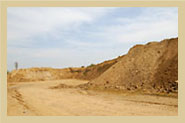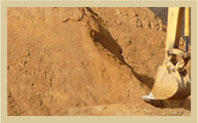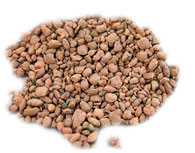News
New Web Site of "MLADOST" Group
17th June 2011
Dear visitors, as a part of our promotional activities aiming to better presentation of our production programme, a new web presentation of the "MLADOST" group is set.
Sponsor of RTS Race
20th May 2011
At the ceremony in a Belgrade Hotel, the Majestic, it was made official that this year's RTS Race through Serbia ran a record number of participants in 149 municipalities and cities of our country....
Construction, Energy, Technology, Timber Industry Trade Show - EXPOKOS in Pristina
18th May 2011
A group of factories for manufacturing of construction ceramics "MLADOST" takes part at the 10th Trade show of construction, energy, technology, timber industry - EXPOKOS in Pristina from 18 to 21 May 2011

ABOUT US
Our Clay
In our factories we use very good quality clay which has been subject to examination of the Institute for Materials Research in Belgrade.
Excerpt from the scientific research work:
"EVALUATION OF QUALITY OF BRICK RAW MATERIALS FROM SOUTHERN SERBIA"
Zagorka Radojevic, BSc. Milica Arsenović, dipl.eng.technol.., Milos Vasic, dipl.eng.technol.
This paper presents the evaluation results of the quality of three brick raw materials from Southern Serbia: the pit near Leskovac, one near Vlasotince and another one near Mala Plana. The research has included chemical, mineralogical, granulometric and ceramic-technological characteristics of representative samples from these deposits. The paper shows the evaluation of raw materials in terms of the quality of brick products, the energy efficiency and the environmental parameters.
INTRODUCTION
Basic raw materials for clay bricks are clay, loess, shales, marls and others. Geological surveys and research resources in Serbia are carried out in a unique way. These investigations are carried out by generally applicable methods and regulations, which provide sufficient information about the quality and quantities of raw materials and on the basis of which decision about the operation is made.
There is no building material that could replace brick products in terms of strength, porosity, insulating ability, durability, fire safety, resistance to weathering and corrosion resistance, form stability and opportunities for achieving diversity in construction. In addition to the positive characteristics of this building material, more and more urgent need to preserve the environment as well as the conditions for life, work and health refer to manufacturing and use of bricks.
Southern Serbia has developed manufacture of a range of various brick products. In the factories for brick production: "MLADOST" d.o.o. - Leskovac, "MLADOST-RAD" d.o.o. - Vlasotince and "MLADOST-TMP" - Mala Plana, the modern highly automated production lines were put into operation. Their work was supported by quality local raw materials. The paper grades raw materials in terms of product quality, energy efficiency and environmental parameters.
QUALITY BRICK PRODUCTS
Based on the results of testing of brick raw materials from the south of Serbia it can be concluded that modern production can produce:
- Brickware goods of a wide range of assortment (roof tiles, facing brick and blocks, clay products for indoor walls, ceiling-mounted elements, hollow clay products, etc..
- The products of high aesthetic qualities, of intense red color,
- The salt-free and lime-free products
- The products of high mechanical properties (compressive and flexural strength).
- The products that provide good fire resistance and excellent thermal and acoustic properties of objects.
The colour of baked brick products basically depends on the mineralogical composition of raw materials, temperature and baking conditions. The dominant influence on the brick colour is iron. Brick raw materials mainly contain iron in the form of minerals from the group of hydroxides (goethite, limonite). In the process of burning, iron hydroxide is transformed into hematite, which gives the ceramic body its red colour. From the test results it is concluded that the colour of baked goods is the intense red.
The low content or absence of carbonates indicates the absence of harmful effects of lime on the baked goods.
The mechanical characteristics of the baked goods are high.
ENERGY EFFICIENCY
The test results of ceramic-technological properties of the samples show that the required baking temperature is relatively low, 830-9000C. Low firing temperature significantly lowers specific consumption of energy during the baking process and increases the energy efficiency of the process. For example, the most commonly required temperature for burning brick products produced in factories in Serbia ranges from 950 to 10500C.
Good plasticity of the tested samples enables production of brick with thinner walls and of less weight which reduces raw material need and energy consumption per unit of normal size.
ENVIRONMENTAL ASPECTS
Modern production processes are required to avoid environmental pollution. Brickware production allows the use of waste materials. The studied raw materials can be mixed with waste materials with the adequate plans for the optimal mixture for a particular type of a product. The emission of gasses in the baking process comes from the fuel and the raw materials. Thus HF, SO3, SO2, HCl, CO2, etc appear. This issue requires serious study of the overall emission and necessary measures to be taken.
However, based on results of testing the chemical composition of raw materials from southern Serbia there are no conditions for significant emission, because the content of components that emit harmful gases in the process of burning is minimal or non-existent. Even the content of carbonate in the raw material is low, and there is almost none CO2 emission that comes from raw materials.
CONCLUSION
Brick raw materials from southern Serbia represented by the tested samples make a significant raw materials resource for manufacturing a various range of products of high aesthetic and physical and mechanical characteristics. The properties of raw materials enable the production of energy-efficient modern factories. The raw materials can be considered high quality ones even from the standpoint of more and more demanding environmental requirements.


